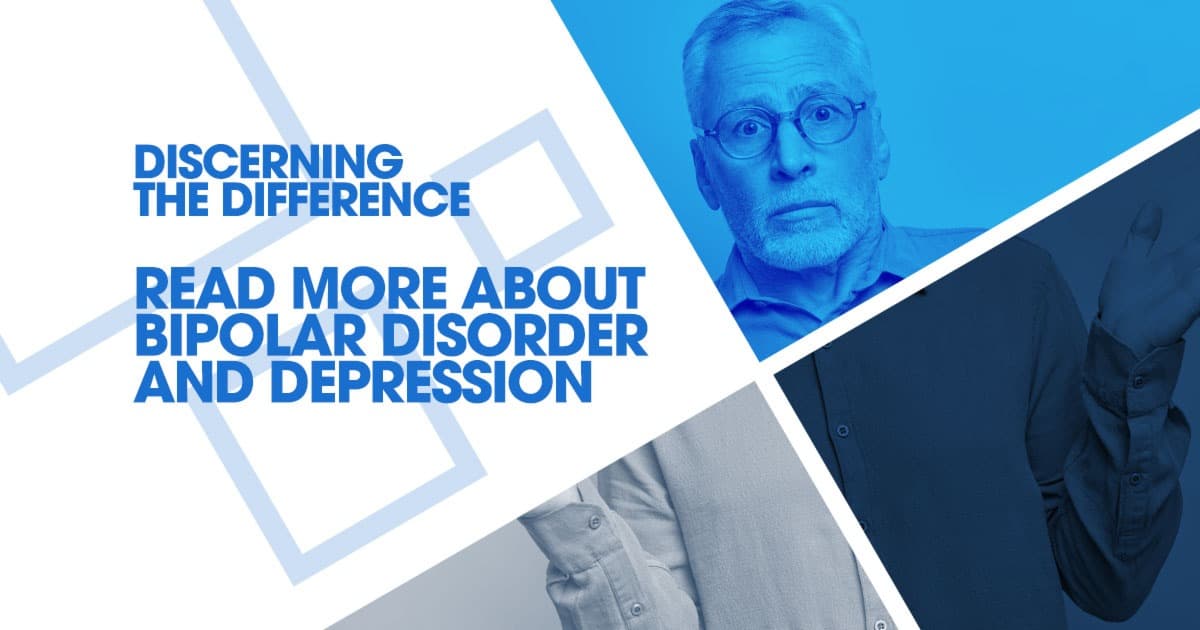Bipolar disorder is often confused with depression mainly because it includes depressive episodes. They have other similarities that can muddy the water and cause further confusion. Discerning the difference between bipolar disorder and depression starts with understanding each’s symptoms.
Bipolar and Depression Symptoms
The main difference between the two is that bipolar refers to opposite ends (poles) of the emotion spectrum. You may experience periods of extreme depression, but you also have periods with incredible highs, called mania. Depression is unipolar, meaning there is no “high” period. They are differentiated further by their symptoms:
Bipolar Disorder Mania Symptoms (in addition to depressive symptoms listed below):
- Increased self-esteem
- Decreased need for sleep
- More talkative than usual
- Racing thoughts
- Distractibility
- Increase in goal-oriented activity
- Substantial increase in potentially reckless actions (usually involving drugs, money, or sex)
Depression:
- Changes in appetite- Significant weight loss or gain
- Insomnia or hypersomnia occurring most nights
- Feeling anxious or nervous
- Feeling of fatigue almost daily
- Having feelings of worthlessness or excessive guilt
- Difficulty concentrating or making decisions
- Repeated thoughts of death, thoughts of suicide with or without a plan or attempt
Bipolar Disorder Types
There are two types of bipolar disorder and two disorders that are closely related. Understanding the different types can help distinguish between bipolar disorder and depression.
- Bipolar I disorder: This diagnosis is when a patient has had at least one manic episode, regardless of whether or not there has been a depressive episode.
- Bipolar II disorder: This is when a patient has had at least one depressive episode and a period of elevated mood referred to as hypomania. Individuals with Bipolar II tend to experience longer depressive episodes and shorter states of hypomania.
- Cyclothymic disorder: This disorder characterizes chronic, fluctuating mood disturbances. These also involve numerous hypomanic symptoms and periods of depression that are separate from each other.
- Unspecified bipolar disorder: This diagnosis may be given when there is clinically significant abnormal mood elevation. It is usually induced by substances or an association with other conditions.
Treatment and Beyond
Both bipolar disorder and major depressive disorder can majorly impact social and occupational functions. On the other hand, both conditions are treatable, often benefiting from a combination of treatments like talk therapy, medication management, and cognitive behavioral therapy. Thanks to clinical research, there are several therapeutic options today and continuing efforts to expand them.

If you or a loved one has bipolar disorder, upcoming clinical research studies here at Midwest Clinical Research may be an option. Call us at (937) 424-1050 for the details, or visit our website to learn more.
Sources:
https://www.psycom.net/depression.central.bipolar.depression.html
https://www.webmd.com/bipolar-disorder/bipolar-vs-depression
https://www.bbrfoundation.org/faq/frequently-asked-questions-about-bipolar-disorder













